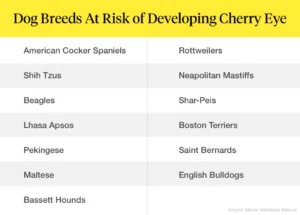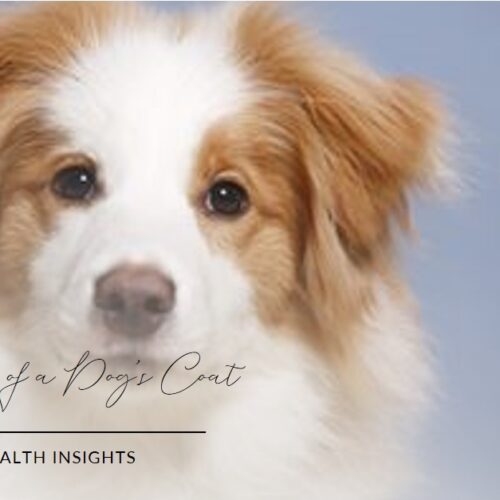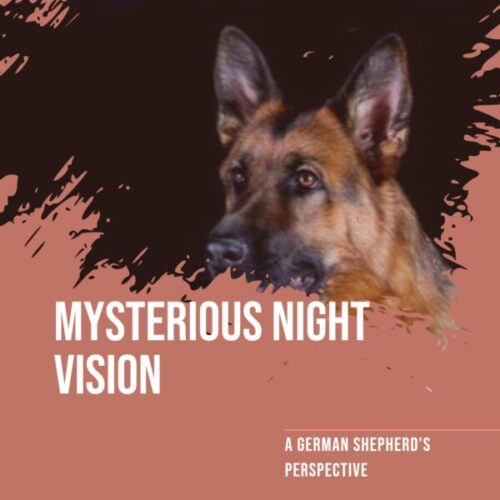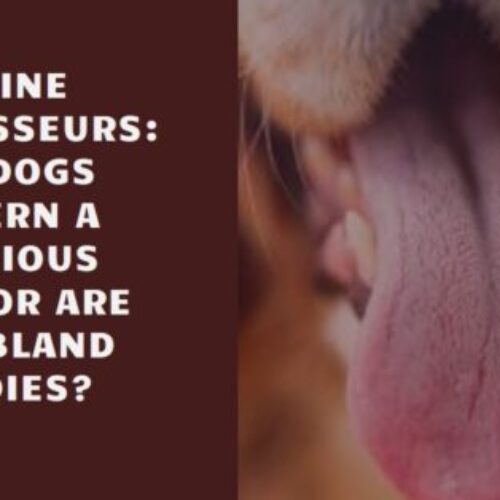Imagine your furry best friend, tail wagging with unbridled joy, suddenly sporting a bright red “accessory” in their eye corner. Not exactly the adorable bandana you had in mind, right? That, my friends, is the unwelcome sight of a cherry eye, a common foe for some dog breeds. But fear not, fellow pet parents! Before you spiral into bandana-less walks and endless vet bills, let’s explore a secret weapon in the fight against cherry eyes: Nutritional Power-ups using Products like Canina® Germany.
What is Cherry Eye ?
“Cherry eye” is a common term for prolapse (or popping out) of the third eyelid gland. Many mammals, including dogs, have a third eyelid located inside the lower eyelid, also called the nictitating membrane. The third eyelid serves as an additional protective layer for the eye, especially during hunting or fighting. The third eyelid also contains a special gland that produces a significant portion of the eye’s protective tear film.
It is an eye condition that can affect dogs. It refers to a prolapse or protrusion of the third eyelid in dogs and is not life-threatening, however, it can cause discomfort and may require immediate veterinary attention. Lets delve into the causes, signs and treatment of cherry eye in dogs.

Causes
It occurs when the connective tissue responsible for holding the third layer of the eye weakens or becomes abnormal. The exact cause of this weakness is unknown, but it is believed to have a genetic predisposition. Certain dog breeds, such as Bulldogs, Beagles, Cocker Spaniels and Shih Tzus, tend to have more cherry eyes.
Signs
The most obvious signs of cherry eye is a cherry-pink red from the corner of a dogs eye, hence the name. Cherry eye can be very noticeable and can cause irritation to the affected dog. Other common signs include increased tears, watery eyes, dry eyes, and rubbing or paralysis of the affected eye. A cherry eye appears as a red, swollen mass on the lower eyelid near the nose or muzzle, resembling a cherry. The cherry eye may be large and cover a significant portion of the cornea, or it may be small and only periodically.
Any signs should be brought to your veterinarian’s attention immediately. Cherry eye is typically diagnosed by examination of the conjunctiva and nictitating membrane. The most obvious symptom of cherry eye is a round fleshy mass in the medial canthus of the eye, similar in appearance to the fruit it is named for. This mass may be unilateral or ‘’bilateral’’. Both eyes may develop cherry eye at different times in the animal’s life.
Treatment
If you suspect your dog has this diesease then it is important to consult a veterinarian for appropriate treatment for an accurate diagnosis. Early intervention is essential to prevent complications and ensure the best possible outcome for your furry friend.

Cherry eye treatment options include:
Medical Management:
In some cases, your veterinarian may initially recommend a conservative approach, including topical medications or eye drops use to reduce inflammation and repositioning of the eye with the help of finger. However, medical treatment alone is not enough and sometimes surgery is advised.
Surgical Management:
Surgical correction is the mostly preferred by owners. The procedure involves repositioning the prolapsed gland back into its normal position and securing it with sutures or other techniques. Removal of the gland is NOT a recommended form of treatment. Approximately 5-20% may experience a re-prolapse of the third eyelid gland and require additional surgery. Many pets will eventually experience a prolapse in the opposite eye.
But Wait ….
Here’s where the good stuff comes in. Certain nutrients act like superhero sidekicks, strengthening your dog’s tear production and giving that third eyelid bodyguard the support it needs to stay put. Products such as Bullymax Total Health promotes eye care and is a good source of vitamins and minerals for growth . Check the below page:
Conclusion
Cherry eye is a common eye condition in dogs, especially in certain breeds. Although this may sound daunting, timely intervention and appropriate treatment can lead to a successful solution. If you notice any signs of cherry eye in your dog, it is recommended that you consult a veterinarian for an accurate diagnosis and appropriate treatment plan. With proper veterinary attention, your beloved companion can soon be on the path to recovery, maintaining healthy and comfortable eyes. There are numerous videos on Youtube which will guide an owner who faces this problem in their loved pet.
Follow us on Instagram





